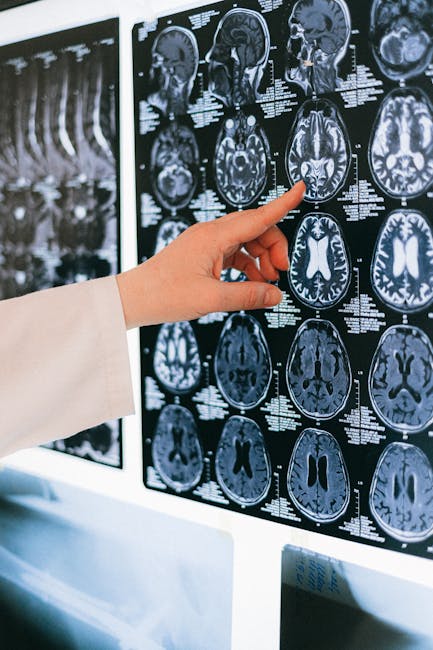Understanding Castleman Disease: A Rare but Significant Lymphatic Disorder
Castleman disease, also known as giant lymph node hyperplasia, is a rare disorder characterized by the enlargement of lymph nodes. While relatively uncommon, it’s crucial to understand its various manifestations, potential complications, and available treatment options. This comprehensive guide delves into the intricacies of Castleman disease, providing valuable information for patients, caregivers, and healthcare professionals.

Types of Castleman Disease
Castleman disease is broadly classified into two main types: unicentric and multicentric. Understanding this distinction is critical for diagnosis and treatment planning.
Unicentric Castleman Disease (UCD)
UCD is characterized by the enlargement of a single lymph node group. It’s generally considered a less aggressive form of the disease and often responds well to surgical removal. Symptoms can be localized to the affected area, including pain, swelling, and potentially fever. While relatively benign, regular monitoring is essential to ensure no recurrence or progression.
Multicentric Castleman Disease (MCD)
MCD is a more complex and potentially life-threatening condition. It involves the enlargement of multiple lymph node groups throughout the body. This form of the disease is frequently associated with systemic symptoms, including fever, night sweats, weight loss, fatigue, and anemia. MCD can also be further categorized into HHV-8-positive and HHV-8-negative subtypes, which have implications for prognosis and treatment strategy. The HHV-8 (Human Herpesvirus 8)-positive form, linked to Kaposi’s sarcoma-associated herpesvirus (KSHV), is particularly aggressive and requires intensive management.
Symptoms of Castleman Disease
The symptoms of Castleman disease vary depending on the type and severity of the condition. Common symptoms include:
- Swollen lymph nodes (localized in UCD, widespread in MCD)
- Fatigue and weakness
- Fever (often intermittent)
- Night sweats
- Weight loss
- Anemia
- Splenomegaly (enlarged spleen)
- Hepatomegaly (enlarged liver)
- Pain in the affected area (UCD)
- Neurological symptoms (in rare cases)
It’s important to note that some individuals with Castleman disease may experience minimal or no symptoms, especially in cases of UCD. However, regular check-ups and monitoring are recommended even in asymptomatic cases.
Diagnosis of Castleman Disease
Diagnosing Castleman disease involves a combination of methods. A physical examination to assess lymph node enlargement is often the initial step. Further investigations may include:

- Blood tests: To evaluate complete blood count (CBC), liver function, and kidney function.
- Imaging studies: Such as CT scans, MRI scans, and PET scans to visualize lymph node enlargement and assess the extent of the disease.
- Lymph node biopsy: This is crucial for definitive diagnosis, allowing pathologists to examine tissue samples under a microscope and determine the type of Castleman disease.
- HHV-8 testing: To determine if the disease is associated with this virus, particularly in cases of MCD.
Treatment of Castleman Disease
Treatment options for Castleman disease depend on several factors, including the type of disease (UCD or MCD), the severity of symptoms, and the presence of HHV-8. Treatment strategies may involve:
For Unicentric Castleman Disease
Surgical excision of the affected lymph node is often curative in UCD. In some cases, radiation therapy may be used as an alternative or adjunct to surgery.
For Multicentric Castleman Disease
Treatment for MCD is more complex and may involve a combination of approaches:
- Immunosuppressive therapy: Drugs such as corticosteroids, rituximab, and sirolimus may be used to suppress the immune system and reduce inflammation.
- Targeted therapies: These drugs aim to specifically target the underlying mechanisms driving the disease. Examples include bortezomib and lenalidomide.
- Antiviral therapy: For HHV-8-positive MCD, antiviral medications may be used to control the virus.
- Supportive care: This includes managing symptoms like fever, anemia, and fatigue.
Living with Castleman Disease
Living with Castleman disease can present challenges, but with appropriate medical management and support, individuals can maintain a good quality of life. Regular follow-up appointments with healthcare professionals are crucial for monitoring the disease and adjusting treatment as needed. Patient support groups can provide valuable emotional and practical support.
Research and Future Directions
Research continues to advance our understanding of Castleman disease, leading to the development of newer and more effective treatments. Clinical trials are underway exploring novel therapeutic strategies, offering hope for improved outcomes for those affected by this rare condition.

Conclusion
Castleman disease, while uncommon, requires prompt diagnosis and tailored treatment. Early detection and appropriate management are crucial for mitigating potential complications and improving the quality of life for those affected. Understanding the different types, symptoms, and treatment options is vital for effective care and support.

